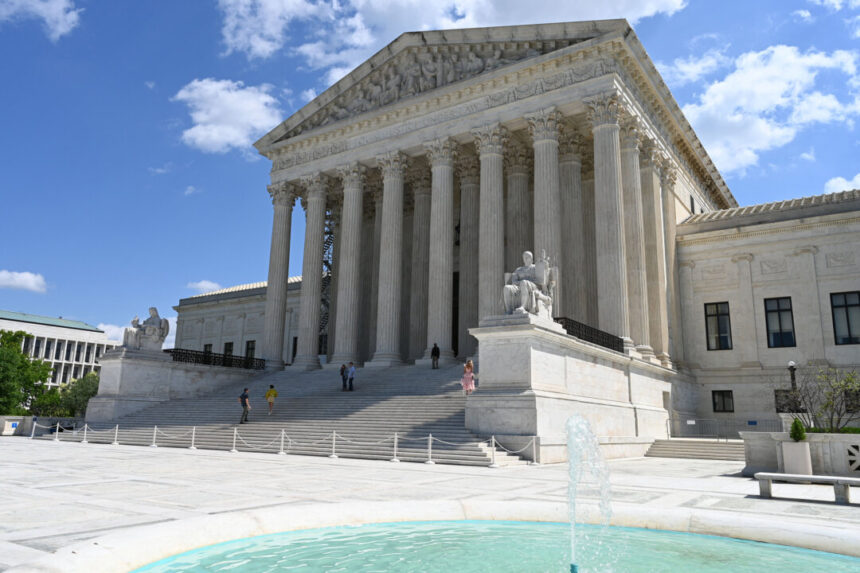The Supreme Court ruled 5–4 on June 27 that U.S. bankruptcy law does not allow courts to approve an opioid manufacturer’s bankruptcy settlement that extinguishes the claims of those alleging they were harmed by opioid use. The case is Harrington v. Purdue Pharma LP.
Stamford, Connecticut-based Purdue Pharma is accused of playing a major role in fueling the ongoing opioid crisis. The company is said to have engaged in irresponsible marketing practices that contributed to the rise of opioid abuse in the United States.
The company makes oxycodone, marketed as OxyContin and other names, which is a semi-synthetic narcotic analgesic that serves as a popular painkiller. The company has also been criminally prosecuted in connection with opioids.
Purdue ran into financial trouble and, when it initiated its bankruptcy proceeding in 2019, members of the Sackler family who founded the company agreed to contribute about $6 billion to settle future opioid-related lawsuits in exchange for a release from liability in future lawsuits. The total payout to opioid victims, hospitals, and states is expected to exceed that amount, and the reorganized company will focus on dealing with opioid abuse.
The Sacklers themselves, who deny wrongdoing, didn’t file for bankruptcy. They haven’t been involved in the company’s affairs since 2019. Forbes magazine listed the Sacklers in 2016 as the 19th wealthiest family in the United States, with an estimated net worth of $13 billion.
The Biden administration objected to the release signed by the Sacklers, which it characterized as an abuse of the bankruptcy system. The release “extinguishes the claims of all opioid claimants except the United States, and therefore applies to an untold number of claimants who did not specifically consent to the release’s terms,” the government said. In other words, the government argues the release is unfair to the opioid claimants because it denies them their day in court.
During the oral argument on Dec. 4, 2023, U.S. Deputy Solicitor General Curtis Gannon suggested that the Sackler family was getting off too easy. The U.S. Court of Appeals for the 2nd Circuit approved a Chapter 11 reorganization plan for the company that will release claims the company’s creditors have against nondebtors such as the Sacklers, Mr. Gannon told the justices. Yet, family members “took billions of dollars from Purdue in the years before Purdue’s bankruptcy … [and] have not filed for bankruptcy protection themselves and have made only a portion of their assets available to the estate in Purdue’s bankruptcy,” Mr. Gannon told the justices.
Members of the family extracted about $11 billion from the company in the 11 years before it filed a bankruptcy petition, according to the government. The 2nd Circuit “found authority for that release in a catchall provision of Chapter 11 … but this release goes beyond what the statute authorizes … and it also conflicts with the basic nuts and bolts of the Bankruptcy Code’s comprehensive scheme.”
The release allows “the Sacklers to decide how much they’re going to contribute,” he said. “It grants the Sacklers the functional equivalent of a discharge, what they might get if they themselves were in bankruptcy, though even such a discharge would not extend as this one does to claims involving fraud and willful misconduct.
“This Court should hold that nonconsensual third-party releases are not authorized by the Bankruptcy Code,” the government lawyer said at the time. This is a developing story. This article will be updated. Please rephrase this sentence.
Source link






